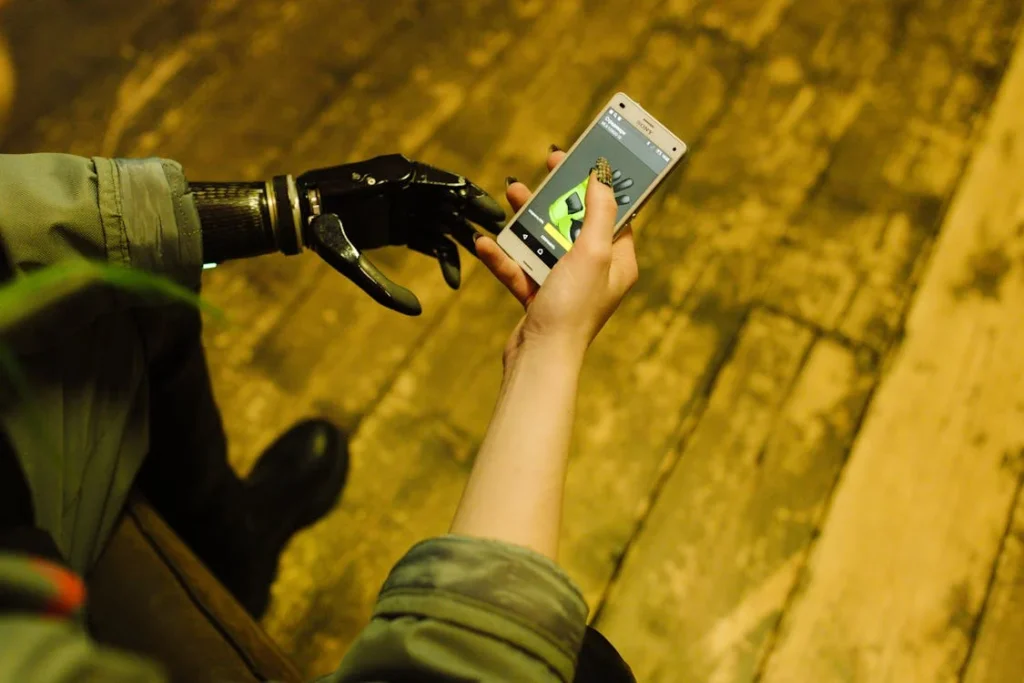Rehabilitation after limb loss is a long road, especially for elderly people. It’s not just about healing the body—it’s about rebuilding confidence, adapting to a new way of life, and staying motivated every single day. For many older adults, that journey can feel slow and exhausting. But what if we could make it feel a little more like play than work?
That’s where gamified rehab comes in.
This approach takes something that can feel dull or overwhelming and transforms it into something engaging and even fun. But gamified rehab is more than just adding a screen or a game controller—it’s a smart, evidence-based way to help older adults with limb loss stay consistent, build strength, and track their progress in a meaningful way.
Let’s dive deep into how this works—and why it may just be the future of elderly care after amputation.
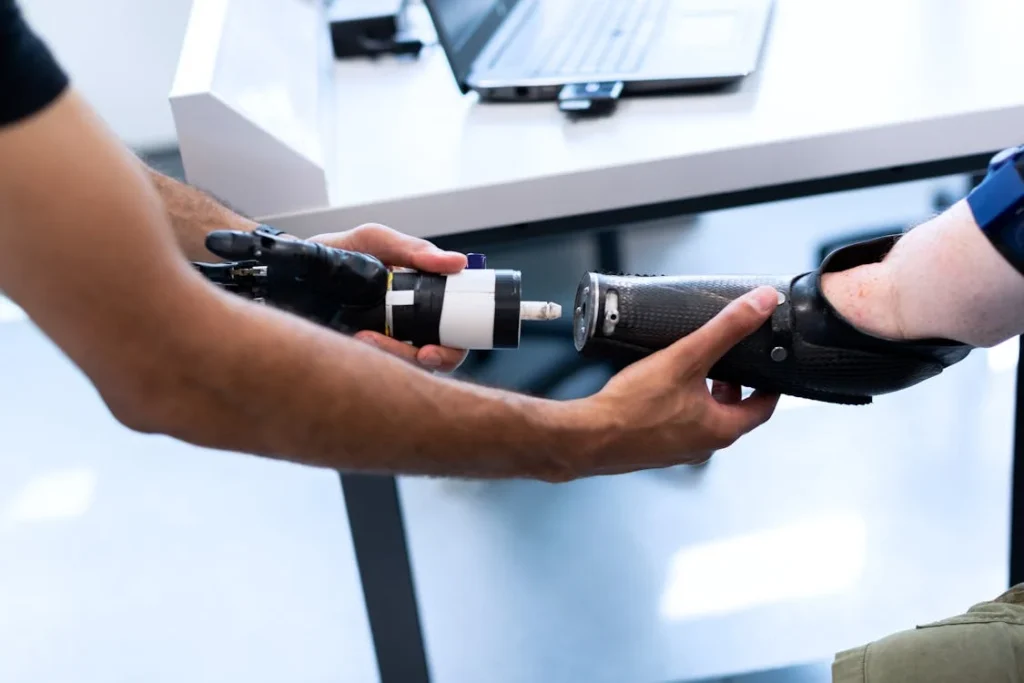
Understanding Gamified Rehabilitation
What Is Gamified Rehab, Really?
Gamified rehabilitation uses game-like elements to make therapy more engaging. Instead of repeating the same exercises again and again with no feedback or sense of accomplishment, patients interact with software or devices that turn those exercises into activities that look and feel like games.
That might mean reaching toward a virtual object on a screen. Or following a rhythm with arm movements. Or trying to beat a personal score by doing more reps in a set time.
It’s not about playing games for entertainment. It’s about using the structure of games—goals, feedback, progress bars, challenges—to make therapy more effective.
And for older adults, this can make all the difference.
Why the Elderly Often Struggle with Traditional Rehab
Let’s be honest: rehab is hard for everyone. But it’s especially hard when you’re older.
After limb loss, elderly patients often have to deal with more than just the amputation. They may already be managing other conditions like diabetes or arthritis. They may feel weak or scared of falling. Their bodies take longer to heal. Their energy levels are lower. Their motivation may not be high.
Add to that the emotional burden—losing a part of your body is deeply personal. Many seniors feel a deep sense of loss, isolation, or even shame. Traditional rehab can sometimes feel cold, repetitive, or frustrating.
If it’s just a checklist of exercises, it’s easy to lose interest. That’s when people start skipping sessions or doing the bare minimum.
Gamified rehab changes that story.
How Games Rewire the Brain for Motivation
Games work because they tap into how our brains respond to rewards. When you complete a level or hit a goal in a game, your brain releases dopamine—a chemical that gives you a little jolt of satisfaction. It makes you want to do more.
Now, imagine bringing that same feeling into a rehab session.
Instead of just lifting your leg or moving your arm because the physiotherapist told you to, you’re doing it because you want to win a challenge or earn a score. You see your improvement in real time. You know where you stand. And you want to do better next time.
For older adults who may be struggling with confidence or feeling like they’re “too old” to improve, that small sense of achievement can be incredibly powerful.
Tech That Makes It Possible
Gamified rehab isn’t just a theory—it’s real, and the technology is evolving fast.
In some setups, sensors are attached to the prosthetic limb or to the user’s body. These sensors track movement, speed, range of motion, and accuracy. That data feeds into a game-like interface that shows the user what to do and how they’re doing.
There are platforms that use tablets, motion-capture cameras like Kinect, VR headsets, or even just a simple TV screen and remote. Some systems are built specifically for prosthetic training—helping users learn to control their new limbs with more precision and less frustration.
The best part? Many of these systems are designed to be used at home, so seniors don’t always have to travel for rehab sessions. That gives them more freedom, more consistency, and more comfort.

Why Gamified Rehab Is a Game Changer for Elderly Amputees
Bringing Purpose to Every Movement
One of the biggest challenges older adults face after limb loss is staying motivated through the long and repetitive rehabilitation process. Traditional rehab exercises can often feel disconnected from real-life benefits. Patients are told to do ten repetitions of a certain motion or hold a stretch for thirty seconds, but they don’t always understand how it translates to their daily life. Gamified rehab changes that by giving every motion a sense of purpose.
When a movement is tied to a visual goal—like reaching to grab a floating apple in a virtual garden or helping a character climb stairs on a screen—it becomes more than just a physical action. It becomes part of a larger mission. This storytelling element, even when very simple, helps elderly users feel like they’re accomplishing something meaningful. They begin to understand that each movement contributes to regaining their independence, like brushing their hair or reaching a shelf at home. And that emotional connection makes them more likely to push through the discomfort and keep going.
Tracking Progress in a Way That Feels Real
Older patients can sometimes feel like they’re not making progress, even when they are. Small improvements aren’t always easy to notice. That’s where gamification helps enormously. Every session becomes measurable, and the progress is shown in real time—whether it’s a slightly faster reaction time, better control over their prosthetic, or a longer reach.
Seeing a digital score or an improvement chart on screen provides clear, visual proof that the user is getting better. That kind of feedback is often missing in regular rehab. When elderly users can see their numbers going up or their in-game results improving, they feel encouraged. It becomes a conversation they can have with their family too—“I scored higher today than yesterday!”—and that creates a sense of pride and ownership in their recovery.
This approach doesn’t just make people feel good. It also helps clinicians make more accurate decisions about treatment. Data from the game sessions can highlight which areas need more attention and when it’s time to increase difficulty or change the routine.
How It Rebuilds Confidence and Reduces Fear
After an amputation, many elderly users experience a quiet but powerful fear. They’re afraid of falling. Afraid of doing something wrong. Afraid of being judged. These fears aren’t always spoken aloud, but they shape behavior. People may avoid certain exercises or hesitate to try new movements. That hesitation slows down recovery.
Gamified rehab creates a safe space to experiment and try again. Because the environment is virtual and guided, users know they can’t get hurt. If they miss a target or move too slowly, nothing bad happens. They just get another try. That safety encourages them to keep going, and over time, their confidence builds.
In some systems, the software adapts based on performance. If a user is struggling, the game might automatically slow down or adjust the difficulty. This avoids feelings of failure and keeps the experience positive. And when the user improves, the game responds by becoming more challenging—just enough to keep things interesting without being overwhelming.
That dynamic feedback loop is something traditional rehab can’t always provide in real time. It keeps users in the sweet spot: challenged but not frustrated, supported but not babied.
Creating Routine Without Feeling Like a Chore
We know that consistency is key in rehabilitation. The more regularly a patient performs their exercises, the better the outcome. But keeping up with rehab can feel like a burden, especially when someone lives alone or doesn’t have a strong support system. It’s easy for an elderly person to skip a session with the thought, “I’ll do it tomorrow,” until several days go by.
When rehab is gamified, it becomes something to look forward to. Users begin to treat it like their favorite pastime or hobby. Just like someone might look forward to doing a crossword puzzle or watching their favorite show, gamified rehab turns exercise into an activity they want to return to daily. Over time, this consistency pays off not just in physical progress, but in mental health too.
Some systems even allow users to set daily goals or reminders that come with rewards or unlock new features. It creates a little sense of anticipation, which can help keep older adults more involved and emotionally invested in their progress.
Not Just Physical—It’s Cognitive, Too
One of the less talked about but equally important benefits of gamified rehab is its effect on the brain. Cognitive decline is a concern for many older adults, especially after a traumatic life event like limb loss. The sudden change in routine and mobility can lead to isolation, memory issues, and even depression.
Because many gamified rehab programs include visual tracking, memory-based tasks, and decision-making components, they actually provide cognitive stimulation alongside physical exercise. That’s especially helpful in maintaining mental sharpness and emotional balance during recovery.
Think about a game where a user has to remember a pattern of movements, follow visual cues, or make quick choices between left and right actions. These seemingly simple activities help with reaction time, focus, and working memory. And because they’re part of a game environment, users don’t feel like they’re being tested—they feel like they’re playing, which reduces pressure and anxiety.
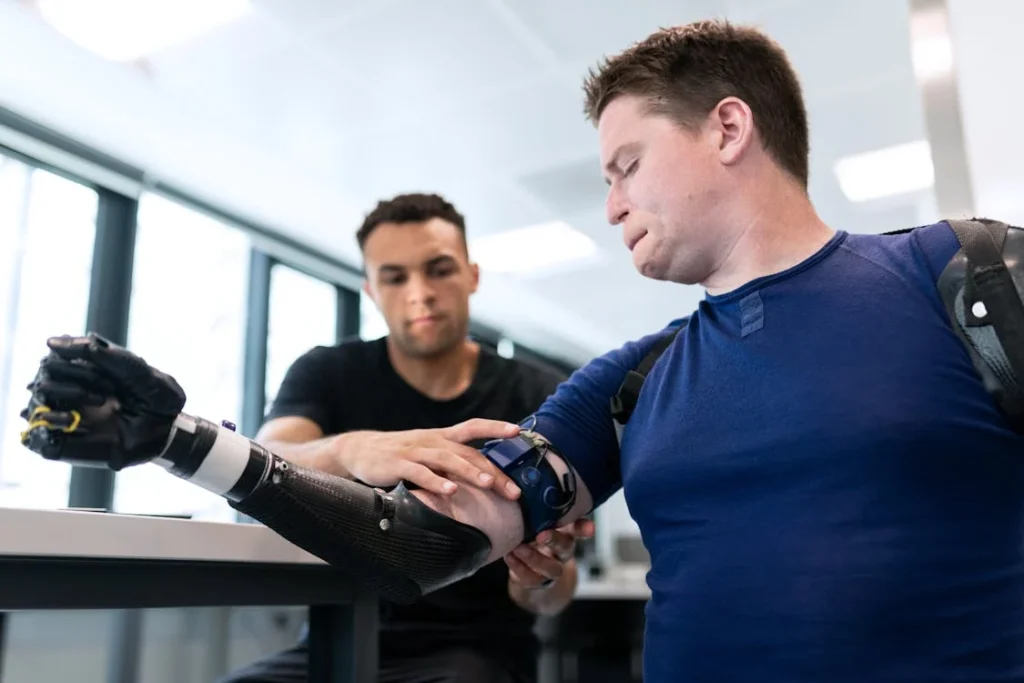
Designing the Right Games for Elderly Amputees
Tailoring the Experience to Age and Ability
Not all games are created equal—and when it comes to elderly users with limb loss, the design of the rehab game matters more than anything else. These users need something that matches their pace, respects their limitations, and gently pushes them forward without creating confusion or stress. It’s not just about slapping a game interface on top of an exercise routine. It’s about designing an experience that is easy to understand, soothing to interact with, and effective in its results.
Older adults might struggle with complex user interfaces or fast-paced visuals. If the game feels too complicated or rushed, it can create anxiety rather than motivation. That’s why the best gamified rehab platforms for elderly patients use simple, clear visuals, large fonts, and intuitive controls. The design needs to consider reduced vision, slower response times, and even hearing loss in some cases. Every element—from color choices to sound effects—needs to be calming, encouraging, and accessible.
For example, a game that involves gently guiding a butterfly to flowers by moving a prosthetic arm may sound simple, but it provides important feedback on range of motion and control. More importantly, it feels relaxing and enjoyable rather than stressful. That kind of thoughtful design goes a long way in making older users stick with their rehab.
Keeping the Tone Encouraging and Non-Judgmental
Language matters. Many elderly users are already self-conscious about their limitations. If a game scolds them for not completing a task or uses phrases that feel too competitive, it can discourage them. Instead, the rehab experience needs to feel friendly and uplifting. Instead of “You failed to complete the task,” the game might say, “Let’s try that again!” or “Great effort—here’s how we’ll improve next time.”
These subtle cues help build a more trusting relationship between the user and the system. It makes the whole experience feel more like a collaboration and less like a test. That’s important for elderly users, especially those who have felt left behind by technology in other areas of life.
Gamified rehab for elderly amputees should never feel like a video game designed for teenagers. It should feel like a tool built just for them—calm, meaningful, and grounded in empathy.
Adapting to Daily Energy Levels
Energy levels can vary wildly for older adults. One day they may feel strong and confident, ready to challenge themselves. The next day, fatigue, pain, or emotional distress might make even simple tasks feel overwhelming. Gamified rehab systems need to be flexible enough to adapt to those ups and downs.
Some platforms use built-in assessments to adjust the difficulty of each session. If the user is moving more slowly than usual or struggling to complete tasks, the system can automatically lower the intensity. This helps reduce frustration and avoids pushing the user past their comfort zone. On better days, the game gently increases the challenge, encouraging progress without making the user feel pressured.
This day-to-day adaptability keeps the rehab process sustainable. It respects the user’s mood, energy, and physical limitations while still nudging them forward in a supportive way.
Creating Emotional Connection Through Personalization
Rehab isn’t just a physical journey—it’s emotional, too. And when users feel emotionally connected to what they’re doing, they’re more likely to stay engaged. Some gamified rehab systems allow users to personalize their environment. They might choose the background music, select the look of their on-screen avatar, or even pick the setting for their rehab tasks—a beach, a garden, a mountain trail.
These small touches can create a sense of ownership. The more the system feels like their space, the more likely they are to keep using it. It also helps elderly users feel more relaxed and open to trying new movements or routines.
Imagine a rehab session where instead of lifting weights or counting reps in silence, a user is watering virtual plants in a beautiful garden—each motion contributing to the growth of their little digital space. That kind of experience taps into emotion and memory, creating warmth and joy in what could otherwise feel like a chore.
Building Trust With the Clinician-User Loop
While gamified rehab is designed to be user-friendly, especially at home, the role of the physiotherapist or clinician is still crucial. In fact, the data collected by these systems allows professionals to have better, deeper conversations with their patients.
When the game tracks every movement, every improvement, and every challenge, it creates a detailed picture of the user’s progress. This helps clinicians adjust the rehab plan with more accuracy and offer targeted advice. It also makes it easier to spot early signs of frustration or fatigue, allowing for timely support.
For the elderly user, this means better outcomes and fewer surprises. They know their efforts are being seen and understood. They can ask questions about specific movements that caused pain or celebrate small milestones together with their clinician. That emotional loop of effort, feedback, and recognition builds trust—and trust is everything in healthcare.
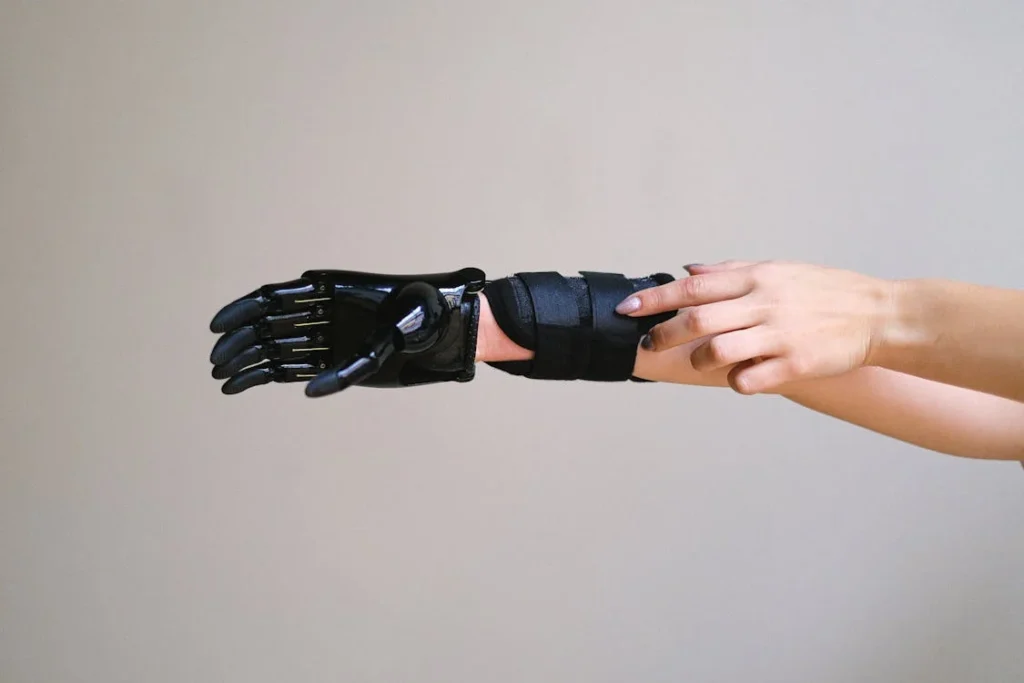
Overcoming Real-World Barriers to Adoption
Bridging the Digital Divide for Elderly Users
One of the most common concerns around gamified rehab is whether older adults can actually use the technology. Many seniors didn’t grow up with screens or touch interfaces, and the idea of using software for therapy may seem intimidating at first. But that doesn’t mean it’s out of reach. With the right guidance and thoughtful design, the digital divide can be bridged.
The key is to start slow. At Robobionics, we’ve found that when elderly users are introduced to the system in a calm, step-by-step manner—with clear visual instructions, hands-on demos, and plenty of time to get comfortable—they respond better than expected. Most users don’t need to understand the inner workings of the technology. They just need to know what to do and what happens when they do it.
Often, the first few sessions are guided by a family member or rehab specialist. Once the user feels confident, they begin using the system independently. In fact, many elderly users report feeling proud that they’ve “mastered” the rehab tool. It becomes not just a way to recover, but a reminder that they can still learn and grow. That emotional boost is hard to quantify, but it’s a key part of recovery.
Affordability and Access in Indian Households
Another real concern is cost. In India, where Robobionics is based, affordability matters—especially for families already stretched thin by medical expenses. High-tech rehab tools can sound expensive, and families may worry about ongoing costs or hidden charges.
That’s why it’s crucial that gamified rehab systems are priced thoughtfully and made available in tiered packages. Some solutions use smartphones or tablets that the family already owns, while others come bundled with the prosthetic. As this technology becomes more widespread, we expect costs to continue dropping, making these tools more accessible to middle-income households and even smaller clinics in rural areas.
In some states, local healthcare initiatives and NGOs are beginning to subsidize digital rehab solutions for elderly patients. That’s an encouraging sign. When gamified rehab is introduced not just as a product, but as part of a holistic care plan, the value becomes much easier to justify—because it leads to faster recovery, fewer hospital visits, and better long-term outcomes.
Creating Support Systems at Home
A major factor in the success of rehab for elderly amputees is what happens outside the clinic. Family support plays a huge role. Gamified rehab offers a unique opportunity for loved ones to be part of the recovery journey—not just as cheerleaders, but as participants.
We’ve seen families set up a daily routine around the rehab game, turning it into a shared activity. Grandchildren help set up the session. Spouses sit nearby, watching progress and offering encouragement. Some games even allow for multiplayer-style interactions or shared goals, which brings a sense of togetherness that goes far beyond the physical therapy itself.
For users who live alone, the system can offer gentle reminders or check-ins. Some platforms include telehealth features where a clinician can monitor the session remotely or send motivational messages. That ongoing connection keeps the user from feeling isolated, which is a common emotional hurdle during recovery.
And because sessions are logged automatically, families can also receive weekly reports or updates. This helps everyone stay informed and makes it easier to provide help when needed—without being intrusive.
Cultural Perception of Play in Old Age
In many Indian households, the idea of elderly people “playing games” may feel unfamiliar or even silly. There’s a cultural notion that games are for children, not for elders recovering from serious surgeries. But this perception is starting to change.
Once families see how game-based rehab improves mood, mobility, and engagement, the hesitation often fades. And for elderly users, the emotional impact can be profound. The ability to play—to laugh, to enjoy, to experience flow—isn’t just reserved for the young. It’s a fundamental human need, and one that helps healing happen faster.
Gamified rehab doesn’t infantilize the elderly. On the contrary, it honors their intelligence and emotional depth. It says: “We believe you’re capable. Let’s make this journey lighter together.”
That’s a powerful message—and one that resonates deeply with users who may have felt overlooked or left behind.
Ensuring Long-Term Use and Avoiding Drop-Off
Initial excitement can carry users through the first few weeks of rehab. But what happens after that? Like with any routine, there’s a risk of drop-off. That’s why gamified rehab systems need to evolve over time. The experience should grow with the user.
Some platforms offer new content every month. Others unlock achievements or surprise elements after consistent use. The point is to keep the journey fresh. When the user feels like there’s something new to look forward to—even something small—they’re more likely to stick with it.
Clinicians can also play a role here by checking in regularly, offering praise for progress, or adjusting the rehab plan to include new goals. When users feel like they’re not just repeating the same thing every day, but actually moving forward, they stay engaged. And when they feel seen—by their family, by their therapist, by the system itself—they’re far more likely to show up again tomorrow.
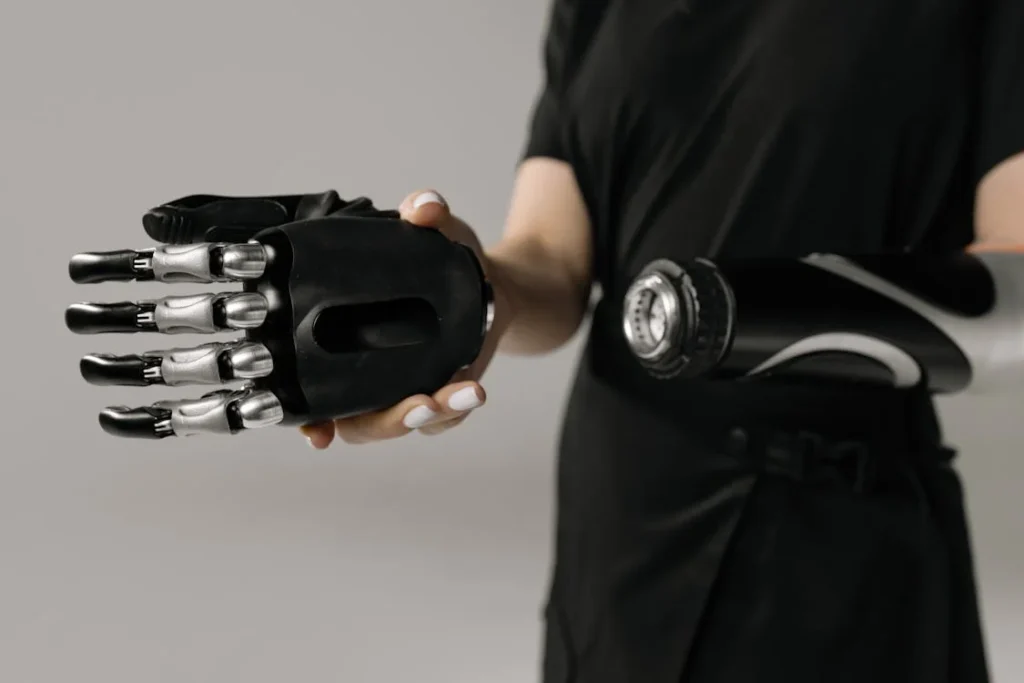
The Emotional Healing Power of Gamified Rehab
Turning Recovery Into a Source of Joy, Not Just Function
While much of rehabilitation focuses on the body—mobility, strength, coordination—the emotional journey after limb loss is just as important, especially for older adults. Grief, shame, helplessness, and frustration often form a quiet storm inside many elderly amputees. They may smile on the outside while quietly struggling with feelings of inadequacy or loss of identity. Gamified rehab, when done well, becomes more than just physical therapy. It becomes emotional therapy too.
Games have an incredible ability to evoke positive emotions—curiosity, amusement, surprise, pride. They reintroduce the idea that something as challenging as rehab can also have moments of lightness. For someone who has spent weeks or months dealing with hospital beds, prosthetic fittings, and difficult diagnoses, the first time they smile during a rehab session is a powerful moment. It breaks the cycle of despair. It makes them feel human again.
Even simple game mechanics like earning stars, seeing a progress tree grow, or getting applause sound effects after a good performance help shift the energy from clinical to personal. This change in emotional tone can reduce depression, calm anxiety, and make patients more open to future rehab sessions. When rehab stops being a burden and starts being a positive experience, the emotional resilience that follows is incredibly healing.
Restoring a Sense of Control and Agency
After losing a limb, many elderly patients feel like life has taken something from them. They are no longer in control. Doctors decide what happens next. Family members help them get dressed, move around, or navigate daily tasks. It’s easy to fall into a pattern where the user begins to feel more like a patient and less like a person.
Gamified rehab gently shifts that balance back. The user is in charge again. They choose when to start a session. They decide how long they want to play. They can track their progress and choose what to work on. This subtle return of decision-making power is psychologically crucial. It rebuilds the feeling that, “I’m still in control of my life. I still matter.”
Every completed level, every high score, every improvement is a small win—but these wins compound into a deeper belief: I can do this. That belief carries over into daily life. Suddenly, tasks that once seemed overwhelming—walking to the bathroom, using the prosthetic arm to cook, stepping outside—begin to feel possible again.
Reconnecting With Identity Through Playful Expression
For elderly users, especially those who are recently retired or living alone, limb loss can lead to a quiet loss of identity. They’re no longer the person who was active, mobile, or independent. They may avoid social situations or hobbies they once enjoyed. That slow fading of self is heartbreaking—and often goes unnoticed by others.
Gamified rehab can open a window to rediscover self-expression. When rehab games include creative or playful elements—such as designing an avatar, selecting a virtual environment, or even naming their in-game companion—it gives users a space to show personality again. It’s a gentle reminder that they’re still imaginative, still unique, still them.
Even the act of choosing between different rehab games (“Do I want to practice balance in the forest setting today, or coordination in the painting room?”) invites a level of preference and playfulness that most traditional therapy never offers. These are small details on the surface—but deeply humanizing under the surface.
Bringing Laughter and Lightness Into the Healing Space
There’s something very special that happens when an elderly person lets out an unguarded laugh during rehab. Maybe their digital pet does something silly when they finish a movement. Maybe the rehab system plays a funny sound when they miss a target. Maybe they make a lighthearted comment after beating their previous score.
These moments may seem trivial—but they are not. They create joy. And joy brings energy.
Energy fuels action.
And action brings healing.
For elderly users, especially those who have lost so much, joy is not a luxury—it’s medicine. Gamified rehab delivers this medicine in a way no physical device alone can. It fills the room with warmth and lightness. It reminds them that healing doesn’t always have to hurt. Sometimes, healing can be soft, warm, and even fun.
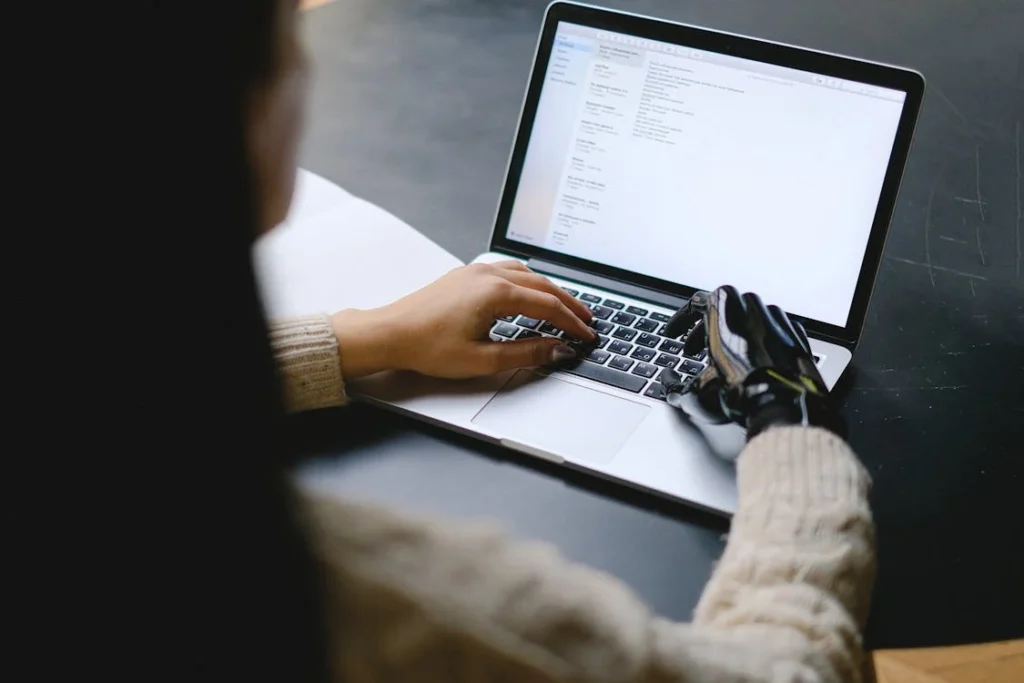
How Gamified Rehab Strengthens Social Connection in Later Life
Rehab as a Gateway to Rebuilding Social Bonds
After an amputation, especially in later life, many elderly individuals begin to withdraw from social interactions. The change in their physical abilities, the emotional burden of feeling “different,” and the limitations in mobility often lead to fewer outings, fewer phone calls, and fewer shared moments with others. This isolation, if left unchecked, can slowly chip away at a person’s mental and emotional well-being.
What’s fascinating about gamified rehab is that, despite being built around personal recovery, it has the unique power to reconnect people. In many ways, it creates new opportunities for interaction. Suddenly, rehab is not a solo struggle. It becomes something that others can be a part of—whether as quiet supporters or active participants.
When elderly users talk about their scores or achievements, it sparks conversation. They begin to share updates like, “I reached level three today,” or “I balanced for a whole minute without help.” These small milestones become meaningful events to discuss with family or friends, breaking the monotony of health complaints or passive interactions.
Shared Goals Within the Home
In many Indian households, the elderly live with extended family. They are surrounded by people, yet they often feel alone in their experience of recovery. Gamified rehab changes this dynamic by giving them something to share. Whether it’s a grandchild cheering them on or a spouse observing their progress, the rehab session becomes a moment of shared focus.
We’ve seen families rally around the user’s rehab journey. Some sit beside them during sessions, others take turns helping with calibration or setup, and occasionally, they even compete in friendly “practice challenges.” These shared rituals strengthen family bonds and shift the dynamic from caregiver vs. dependent to something far more balanced—partners in progress.
This change in tone matters. It allows the elderly user to feel like they’re contributing to the family dynamic again, not just receiving care but participating in something with shared value and energy.
Remote Connection With Peers and Clinicians
One of the emerging strengths of advanced gamified rehab platforms is their ability to connect users remotely. For elderly users who may live far from major rehab centers or specialists, this is a game changer. The system can share real-time data with clinicians, allowing them to monitor performance, adjust plans, or send encouraging messages—without the need for frequent hospital visits.
But the real social breakthrough lies in peer-to-peer engagement. Some gamified rehab tools allow for “ghost play,” where users can try to match or beat another user’s previously recorded performance. Others feature friendly challenges or community events where users of similar age and recovery stage can participate in lighthearted competitions.
Even if users never meet in person, just knowing someone else out there is going through the same journey makes a difference. The sense of being part of a larger community—of not being alone—can reduce depression, increase engagement, and give users something bigger than themselves to connect with.
Restoring the Role of the Elder as a Learner and Leader
Indian culture holds a deep respect for elders, but in practice, many older adults feel left out of conversations about innovation, technology, and progress. Gamified rehab flips that narrative. Suddenly, the elderly user is doing something new. They are learning a new interface. They are mastering a game-based platform. And in doing so, they become a role model to those around them.
When a grandparent shares how they improved their coordination through a virtual garden challenge, younger family members often respond with admiration and curiosity. “You’re doing that on your own?” they ask, surprised. That moment of awe reconnects generations. The elder isn’t just the one being helped—they are the one inspiring others.
This quiet role reversal restores dignity and pride. It creates a beautiful loop where healing fuels self-worth, and self-worth strengthens the desire to keep healing.
Loneliness as a Health Risk—and How Games Push Back
We often underestimate how dangerous loneliness is for older adults. Research shows that prolonged social isolation can increase the risk of heart disease, stroke, cognitive decline, and early death. It’s not just an emotional problem—it’s a medical one.
Gamified rehab, when thoughtfully implemented, offers a countermeasure. It gives elderly amputees a sense of routine, engagement, and, most importantly, connection. Whether it’s through a shared laugh with a therapist, a gentle competition with another user, or a proud smile from a family member, these small human moments act like medicine for the soul.
And when the soul heals, the body follows.
Conclusion
Rehabilitation after limb loss is never just physical—it’s emotional, psychological, and deeply personal, especially for elderly individuals. Gamified rehab offers more than clever software or digital bells and whistles. It brings motivation where there was hesitation, joy where there was fatigue, and connection where there was isolation.
By turning repetitive exercises into engaging challenges, it restores confidence, independence, and a sense of progress. It invites family members to be part of the journey, helps clinicians tailor support, and most importantly, gives elderly users a reason to keep showing up for themselves—day after day.
At Robobionics, we believe that recovery should never feel like punishment. With thoughtful technology and human-centered design, we can make healing empowering, even playful. Because no matter your age, the will to grow never fades—and neither should the tools that help you get there.



